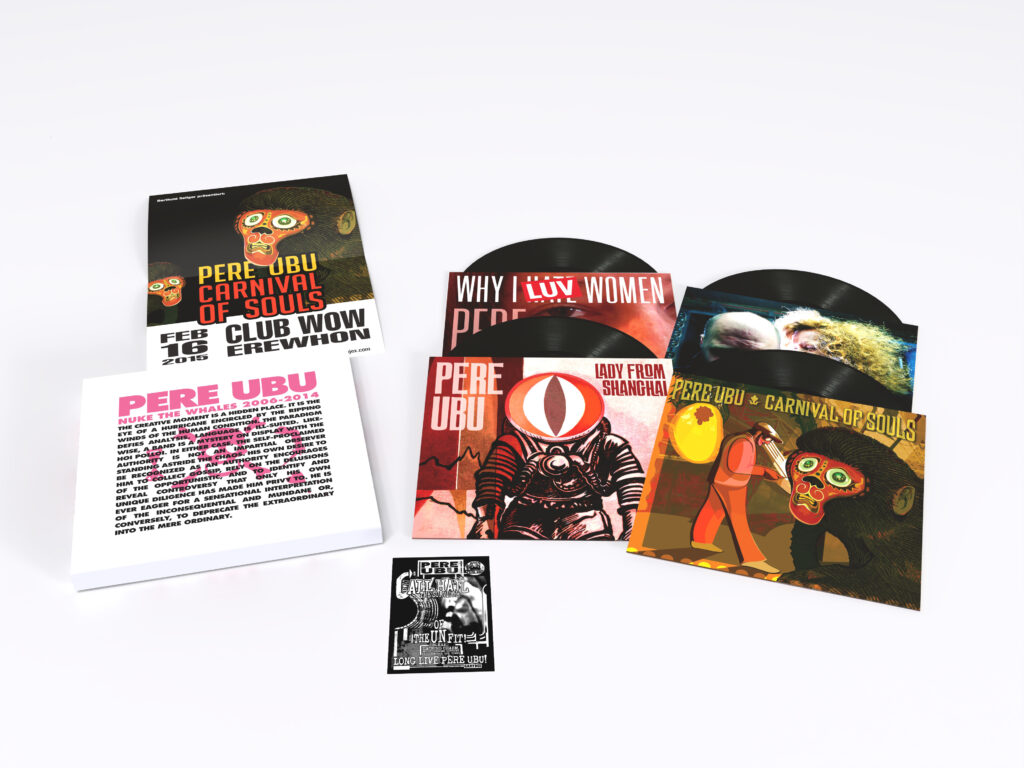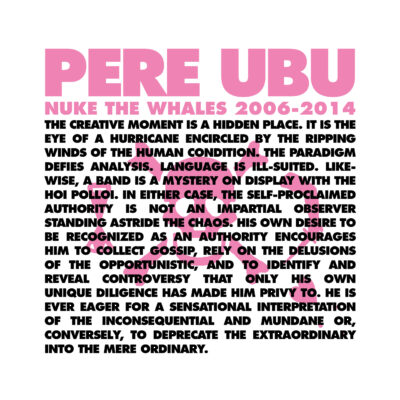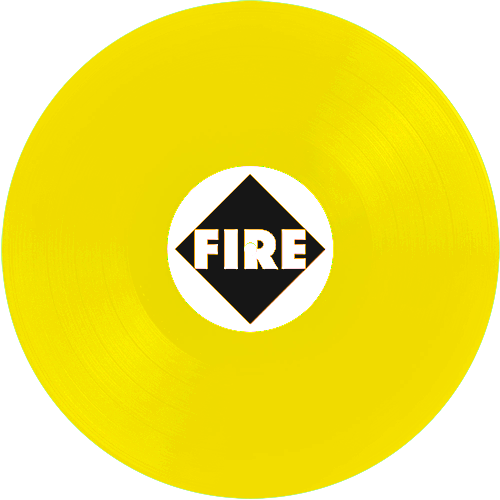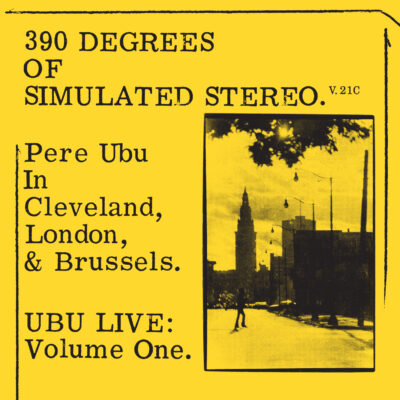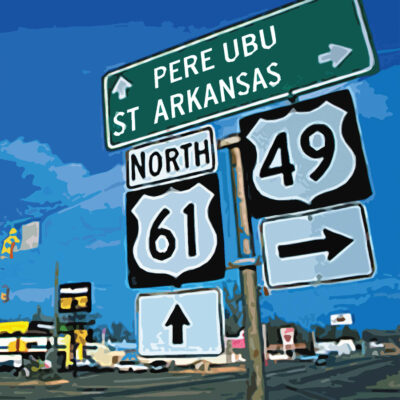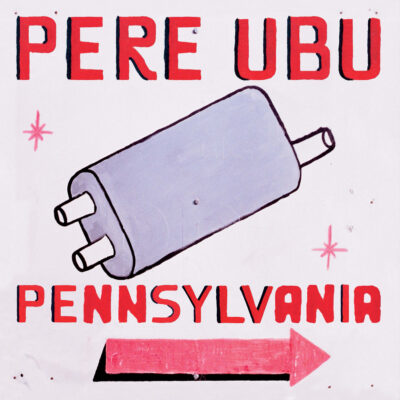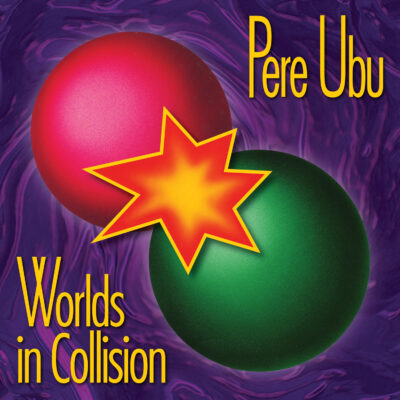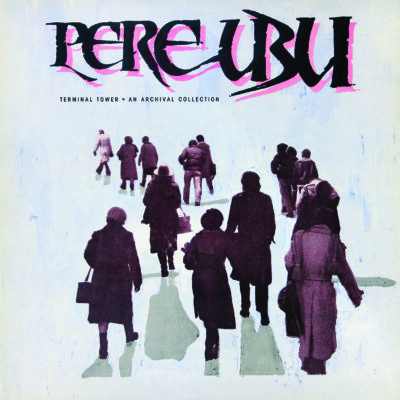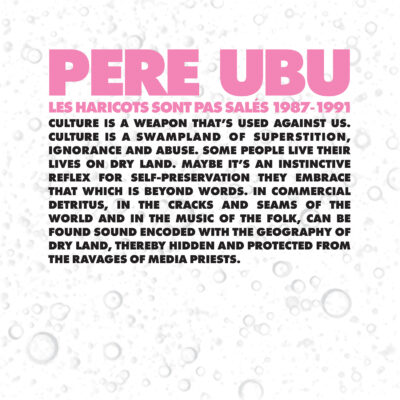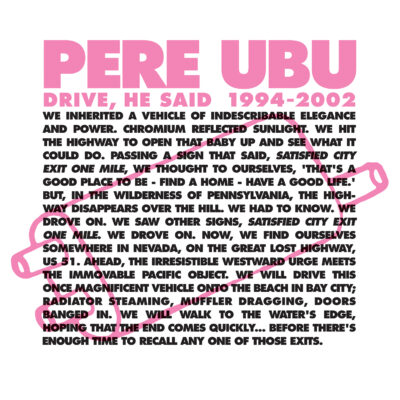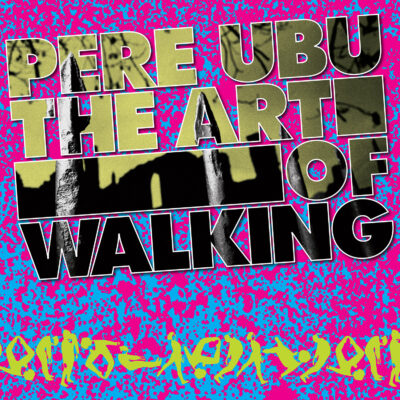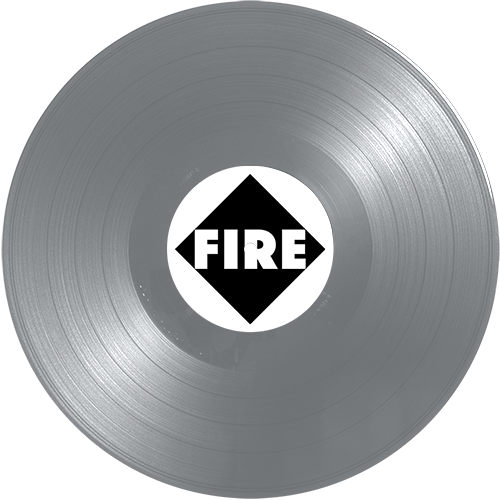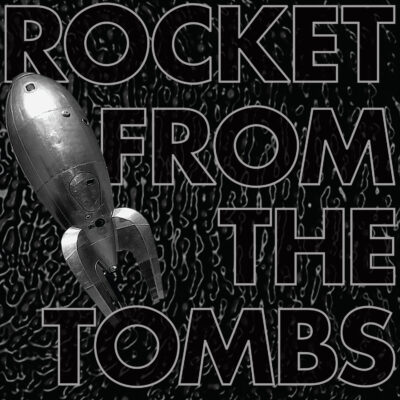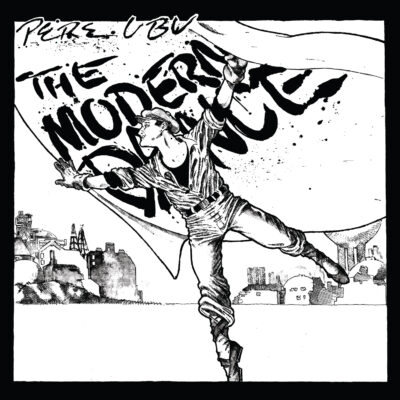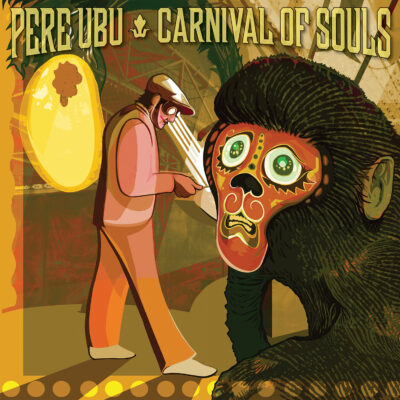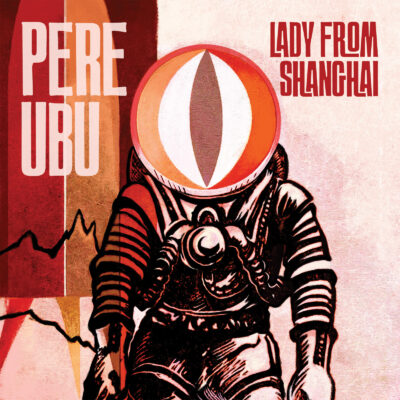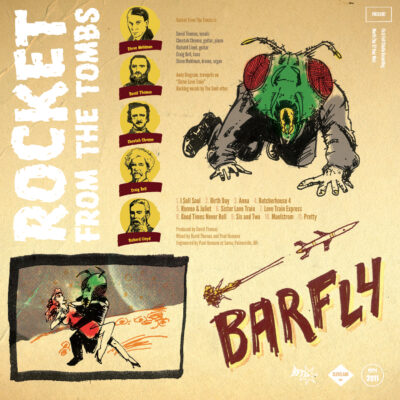Pere Ubu
Pere Ubu are a myth, not a legend. Since 1976, they have been rewriting the face of rock 'n' roll without apology, without limitations and without a care for anything other than The Song. The list of musicians involved in Ubu Projex reads like a Who's-Who (?) of craftsmen/women who understand and desire to play The Song until it has been investigated from every minute angle. The road is long. Pere Ubu is not tired yet. They are merely the cogs to the machine.
Photos
Photos
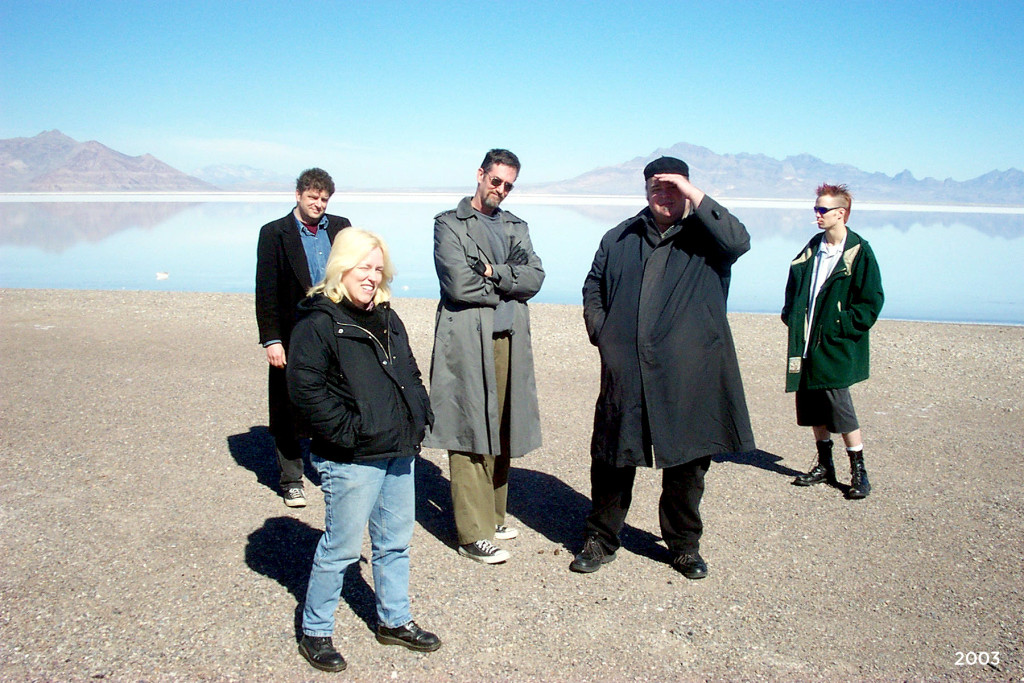
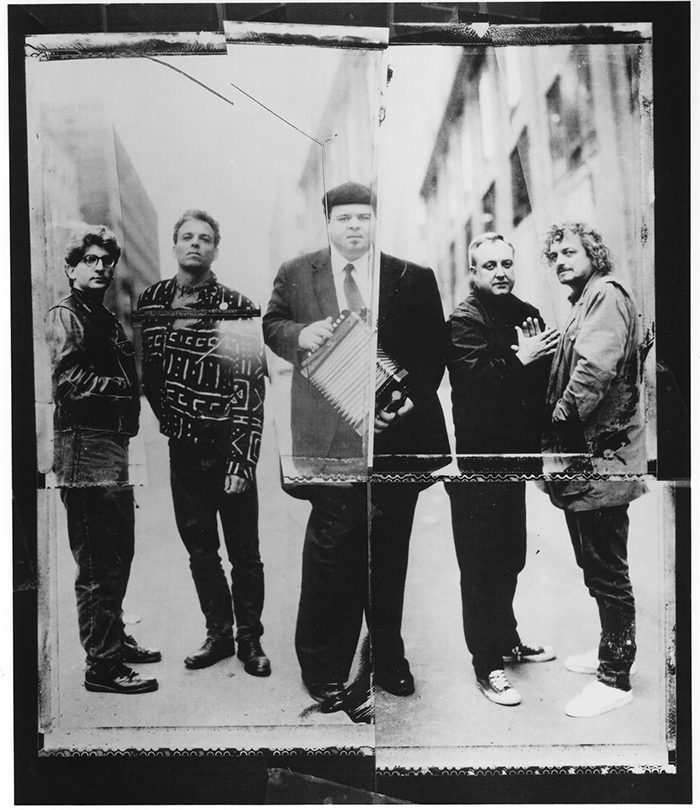
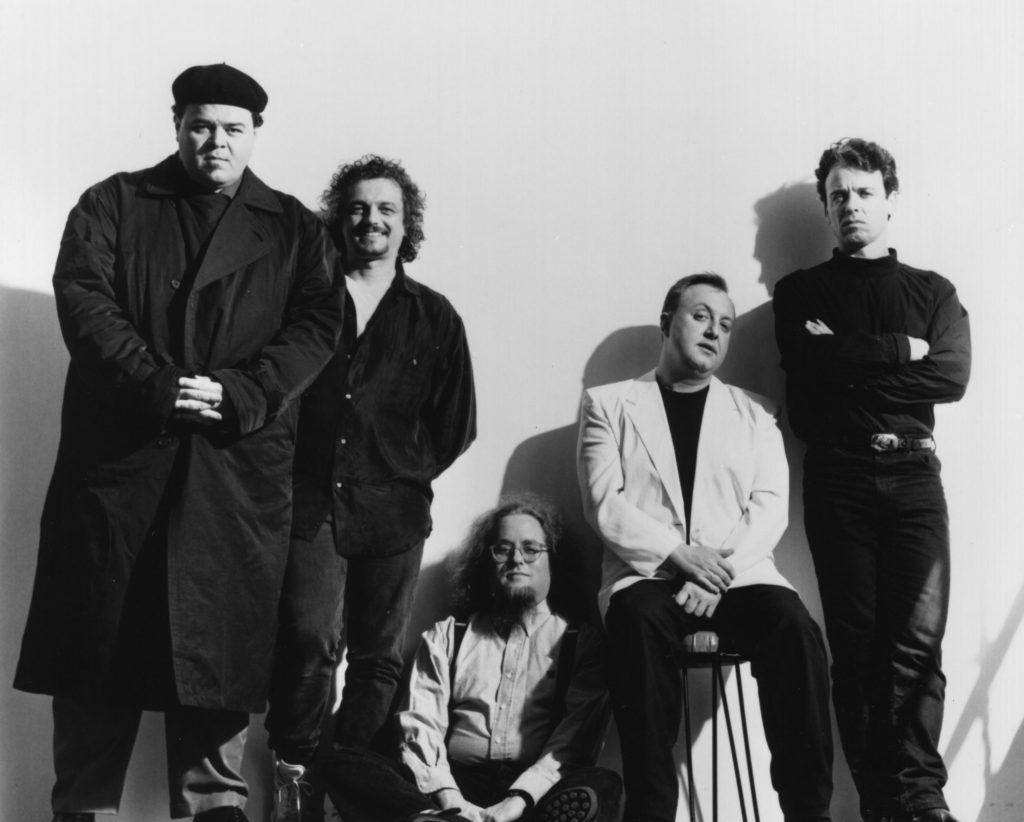
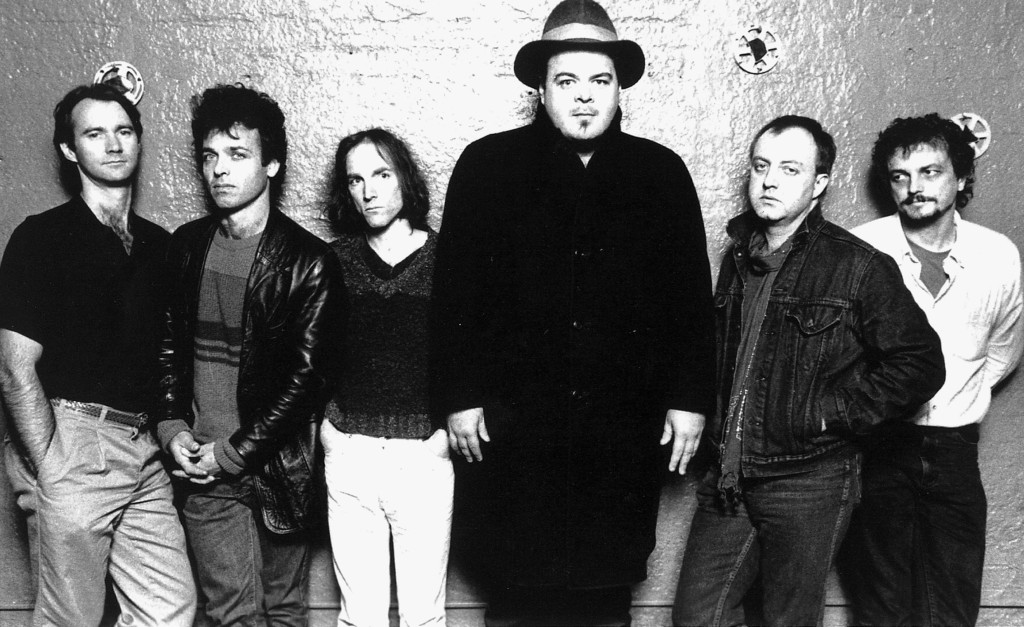
Biography
Pere Ubu are a myth, not a legend. Since 1976, they have been rewriting the face of rock ‘n’ roll without apology, without limitations and without a care for anything other than The Song. The list of musicians involved in Ubu Projex reads like a Who’s-Who(?) of craftsmen/women who understand and desire to play The Song until it has been investigated from every minute angle. The road is long. Pere Ubu is not tired yet. They are merely the cogs to the machine.
Assembled in August 1975 to be the Crosby, Stills, Nash & Young of the Cleveland music underground, the plan was to record one, maybe two singles and exist no more. Within months, however, those first self-produced records were being snapped up in London, Paris, Manchester, New York and Minneapolis. Pere Ubu was changing the face of rock music. Over the next 34 years they defined the art of cult; refined the voice of the outsider; and inspired the likes of Joy Division, Pixies, Husker Du, Henry Rollins, REM, Sisters of Mercy, Thomas Dolby, Bauhaus, Julian Cope and countless others.
Singer David Thomas named the band after the protagonist of Ubu Roi, a play by Frenchman Alfred Jarry. The single, “30 Seconds Over Tokyo” b/w “Heart of Darkness,” released in 1975, was the first of four independent releases on Hearpen Records and, along with Television’s “Little Johnny Jewel,” signalled the beginning of the New Wave. In the early to mid-70s the musicians who were to form Pere Ubu were part of a fertile rock scene that also produced 15-60-75, The Mirrors, The Electric Eels, Rocket From The Tombs, Tin Huey, and Devo.
The group’s first album, ‘The Modern Dance’ (1978) was a startling work that influenced an entire generation of bands. Its follow-up, ‘Dub Housing’ (1978), was the masterpiece, “an incomparable work of American genius.” Pere Ubu toured Europe extensively in 1978, supported by the likes of The Pop Group, Nico, Human League, The Soft Boys and Red Crayola. Late in 1979 Tom Herman left and was replaced by Mayo Thompson, the guitarist from 60s Texas psychedelic-rock legends The Red Krayola. ‘The Art Of Walking’ (1980) followed, a challenging stew of inside-out song structures. Anton Fier (The Feelies, Peter Laughner’s Friction, The Golden Palominos) replaced Scott Krauss in the middle of 1981 and recorded ‘Song Of The Bailing Man’ (1982). At the end of an American tour in December 1981, and after months of growing friction between two members of the group, the band ceased to exist as a functioning unit.
In 1981, Thomas recorded the first of two albums with British folk-rock guitarist Richard Thompson. Three more solo albums featured members of the dormant Ubu. The last of these, 1987’s Ubu-like Blame The Messenger (by David Thomas and the Wooden Birds), led to the reanimation of the Pere Ubu projex. The line-up had been Thomas, Allen Ravenstine, Tony Maimone, Chris Cutler and Jim Jones. Jones was a stalwart on the Cleveland scene and a member of nearly every good band to come from it, at one time or another. Cutler, drummer in English prog-rock outfits Henry Cow and Art Bears, was an early advocate of Ubu and subsequently became a friend of the band. At a Wooden Birds appearance in Cleveland, Krauss sat in with the band. The two drummers line-up sounded good. Later, at the beginning of a European tour, in the lobby of a hotel in Ijmuiden, Holland, Pere Ubu was reactivated. Krauss was asked to join as a second drummer. The clattering ‘Tenement Year’, recorded for a British label (Fontana) headed by Ubu fanatic Dave Bates, followed in March 1988.
Teamed with another Ubu fan, producer Stephen Hague (Pet Shop Boys, New Order, etc.), Ubu shifted gears for 1989’s ‘Cloudland’, an epic journey across the landscape of America. Tired of touring and the grind of it all, Ravenstine retired to take up a career as an airline pilot for Northwest Airlines. He was replaced by Eric Drew Feldman (Captain Beefheart, Snakefinger) who appeared on Stereo Review’s Record of The Year, ‘Worlds In Collision’ (1991), produced by Gil Norton (The Pixies). Cutler, unable to juggle all the demands of his many musical projects, had to leave. The Pixies invited Ubu to support them on an extensive tour of America in 1991. Feldman, subsequently, joined The Pixies as a sideman and worked on Frank Black’s solo projects. When Feldman was unable to record with Ubu because of these commitments the band decided to record what would be the last Fontana album, ‘Story Of My Life’ (1993), as a four-piece.
In January 1994, again without a major label, the band recorded demos for a projected album, ‘Songs From The Lost’ LP, intended to be a tribute to Smile. Krauss left… again. Yellin, busy with his quartet in NYC, was replaced by Robert Wheeler, organic farmer, Ravenstine-protegé, and president of the Thomas Alva Edison Birthplace Foundation. Thomas announced that he was now ready to become the producer for Pere Ubu and that was what he was going to do. ‘Raygun Suitcase’ (1995), awarded CD Review’s Editors’ Choice Award, was recorded to a click track in the hope that Krauss would change his mind. When he didn’t, Scott Benedict, the drummer in Temple’s group, The Vivians, came in over a weekend, the last weekend of production, and recorded all the drum parts in one of the most magnificent displays of studio-craft the band had ever experienced. The next week he retired to take up landscape gardening. Steve Mehlman, Benedict’s replacement in The Vivians, replaced him in Ubu.
In August 1995 Jones retired from the road for health reasons. Herman rejoined the group for the ‘Raygun Suitcase’ tours, and together with Jim Jones recorded Pennsylvania (1998), a highly acclaimed album nominated by one of America’s preeminent rock critics, Greil Marcus, as the best of 1998. In 1999 the Rock n Roll Hall of Fame promoted a special event, “55 Years of Pain,” honouring Pere Ubu and the grand-daddies of the Cleveland scene, 15-60-75. The event was repeated at the Royal Festival Hall in London later in the year, and at the “Fall of The Magnetic Empire Festival,” curated by Thomas and staged at New York City’s Knitting Factory, and during which Wayne Kramer of the MC5 joined the group as guitarist for one show.
The release of ‘St Arkansas’ (2006) was celebrated by The Mighty Road Tour. A “splinter” group within the band, referred to as The Pere Ubu Film Group, premiered a live underscore to a rare 3-D screening of Ray Bradbury’s “It Came From Outer Space” at the Royal Festival Hall, London, in October 2002. A highly successful 6-date tour of the underscore in the United Kingdom followed in November 2004. The group premiered its underscore to Roger Corman’s “X, the Man With X-Ray Eyes” at ‘Celebrate Brooklyn’ (New York City) in 2004.
‘Lady From Shanghai’ (2013) marked the fulfilment of a twenty-year project working out the Chinese Whispers methodology. A book of the same name, written by David Thomas, accompanied the release. In July of 2013, an underscore to the 60s cult film ‘Carnival of Souls’ was premiered at the East End Film Festival in London. Songs and musical pieces written for the underscore were developed over the course of a tour of the United Kingdom, Italy, Croatia and Ireland, in November 2013, undertaken by a ‘shock troops’ version of the band. Each night ideas were improvised from scratch. The album ‘Carnival of Souls’ (2014) resulted. In 2015, with the vinyl box set ‘Elitism For The People’, Fire Records began a re-release program that will eventually encompass the entire Pere Ubu catalogue. ‘Architecture Of Language’ followed in 2016 and ‘Drive, He Said’ in March 2017.

